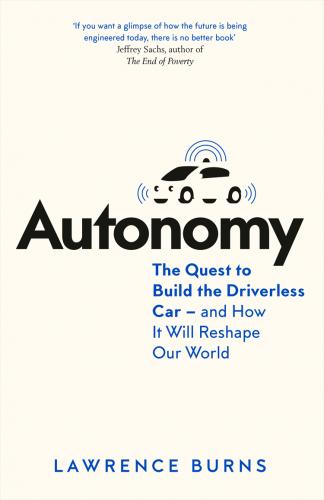And they didn’t. In fact, the worst accident was the rear-ending of Salesky’s rental car. Urmson and Salesky spent weeks racking their brains to think up situations that might mess up the vehicle’s computer algorithms, situations unlikely to happen in real life, let alone in the Urban Challenge. Times, for instance, that all four entrances to an all-way stop would feature the simultaneous arrival of vehicles. How would Boss handle that? Or they’d program in a route and then create an unexpected obstacle along the way, maybe staging an accident that completely blocked the road. Boss would have to calculate an alternate route. There were some near-misses, some last-minute swerves, but for the most part, Boss performed flawlessly. “That was a magical time,” recalled Salesky.
Remember, this was 2007. No one had ever created a robot that could drive in traffic at the speeds that were commonplace on public roads. And as each day passed, Tartan Racing was realizing that it had done it. “The fact that it just generally turned on and worked … it still surprises me,” recalls Salesky. “It was pretty amazing.”
To demonstrate Boss’s capabilities, Urmson posted videos on the Tartan Racing blog. One day, he got a phone call from his liaison with General Motors. The middle manager had been watching the videos Urmson was posting and he was alarmed—so alarmed, in fact, that the manager was considering suggesting GM pull its sponsorship. Urmson gulped. That would be disastrous for Tartan Racing, which needed GM’s sponsorship money. It also would be an enormous black eye for the team.
This was a fascinating moment—one of the first examples of the disconnect between Detroit and the computer scientists and engineers who were working to make autonomous vehicles a reality. This disconnect would manifest later in a years-long rift between Detroit and Silicon Valley. Although the GM manager making the call would have worked under me, I only learned of this incident years later, via Urmson. I could see both sides. Throughout the 1990s, GM had developed a strong culture of workplace safety. Our testing protocols were extremely risk averse. The GM liaison was worried that Tartan Racing’s testing was going to seriously injure someone. He also may have been trying to protect me, and my decision to sponsor the team. It would have been easy to interpret the near-misses in the videos Urmson posted as indications of serious issues with Boss’s programming. GM’s sponsorship of Tartan Racing represented a significant cash investment at a time of deepening financial instability. This was 2007, after all, right before the financial crisis. I was being forced to fight for every research dollar I could get. Anything but a win from Tartan Racing would be a serious personal embarrassment for me, and could compromise my credibility with my strategy-board peers.
Urmson realized he needed to conduct some stakeholder relations. “No, no,” he said. “You guys don’t understand—what we’re testing is far beyond the scope of anything that Boss will face in the Urban Challenge. We’re just trying to see what it can do—we think it’s going to perform amazingly in the finals.”
This reassured the GM middle manager. Heading into October 2007, Boss had eighteen sensors bolted, welded and glued to its exterior. The robot’s luggage compartment housed 10 computers processing 300,000 lines of software code that could make driving decisions 20 times a second. Just months before, Boss could conduct its most complex maneuvers at 15 mph. Now Boss could conduct the same maneuvers at more than twice that speed. It could park itself in a busy parking lot. And if the road was blocked ahead of it, Boss could execute a three-point turn and plan a new route to its objective—completely autonomously.
All of which created an unusual amount of confidence for the Carnegie Mellon team, and for Urmson himself. The first race, Urmson was pretty sure they wouldn’t finish. The second, he and Red and Peterson were so concerned about no one finishing that they set Sandstorm’s speed too low and ended up taking second and third. During the 2007 site visits, Tether indicated he didn’t think CMU even ranked in the top five. But something had happened to Boss in those final two months. This time, Urmson and the rest of the team felt as confident as they ever had heading into the national qualifying event.
That event began on October 25, 2007, in Victorville, California. The venue was George Air Force Base, which featured all the hallmarks of a regular town, such as buildings, roads, homes, apartment buildings and parking lots. All the hallmarks, that is, except for people, because George AFB had been shut down in 1992.
Конец ознакомительного фрагмента.
Текст предоставлен ООО «ЛитРес».
Прочитайте эту книгу целиком, купив полную легальную версию на ЛитРес.
Безопасно оплатить книгу можно банковской картой Visa, MasterCard, Maestro, со счета мобильного телефона, с платежного терминала, в салоне МТС или Связной, через PayPal, WebMoney, Яндекс.Деньги, QIWI Кошелек, бонусными картами или другим удобным Вам способом.
